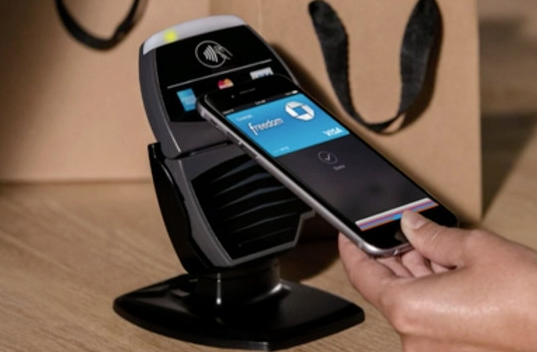
Where Mobile Payments are Headed in 2015

 With the announcement of Apple Pay and Abiliba’s global expansion, digital wallets and mobile payments became mainstream for consumers and small businesses in 2014, with 32% of consumers using alternative forms of payments this year.
With the announcement of Apple Pay and Abiliba’s global expansion, digital wallets and mobile payments became mainstream for consumers and small businesses in 2014, with 32% of consumers using alternative forms of payments this year.
As the affordability of mobile devices integrates them further into our daily lives, there’s no doubt 2015 will be the year we see mainstream adoption from both consumers and businesses.
Looking ahead, there will be a few influential key points that will shape the mobile payment space in 2015.
Big Brand Adoption
Since Apple Pay put the spotlight on mobile payments, the perceptions of both consumers and businesses are shifting and becoming more open to alternative methods of payment. W
ith prominent brands debuting their mobile alternatives users are becoming increasingly comfortable with the idea of using the cloud to move their money, as a result we will see a big increase in user adoption in 2015.
Abandoning of Archaic Technology
As the United States gradually moves away from outdated swipe-and-sign payment systems, the need for innovative POS technology will emerge as a result of consumer demand and we will see North America’s payment space drastically change. Businesses are becoming more open to accepting various forms of mobile payments, which will result in them adapting to a variety of technologies.
With more fraud accountability, businesses will be forced to adjust to the changing market to keep up with user demand and new legislation.
Big Data Continues to Reign
One of the biggest benefits to cashless transactions is big data. Harnessing the data gathered from online and mobile transactions will allow for targeted loyalty and a better understanding of customer information and trends.
Alternative payments will shape the future of retail and how merchants and businesses connect and communicate with their customers.
Security is Vital
With a predicted increase in mobile activity, security will be tested and will need to adapt to the growing demand. The recent security breaches, such as that of Target or Home Depot, will leave doubt with consumers of whether or not mobile payments are trustworthy.
However, when choosing alternative forms of payments always look for security certification. Some alternative financial institutions offer equal security to that of traditional banks. For example, nTrust provides users the highest technical security standard in North America and is licensed, registered and regulated by FINTRAC.
Sophisticated Wearables
Wearables are just debuting to consumers but payment and financial institutions are only just starting to explore the integration within the payment space. With the high adoption of mobile banking and one-touch payment options, users are ready for contactless payments.
Wearables will continue to break into the market in 2015 and consumers are welcoming integrated payment options.
Out with the Old Bank
Traditional banking will need to modernize and find ways to cooperate and leverage services and offerings to compete with companies moving into the alternative payment space. Conventional banks have already started to co-brand with tech companies to provide alternative services to their customers.
2015 will be the year where we will see if traditional banks are able to seamlessly transition into the mobile payment space and offer their customers the latest cutting edge technology. They will need to keep working smarter to establish synergies in these market segments or they run the risk of being left behind.
Everything will be connected as mobile payments become mainstream; users are demanding a seamless user experience as well as additional features on top of payments and money transfers. To elevate their mobile payment platforms companies will be looking to merge the user experience of payment, loyalty cards and incentives; this is where the synergy in traction will come from in this space.











